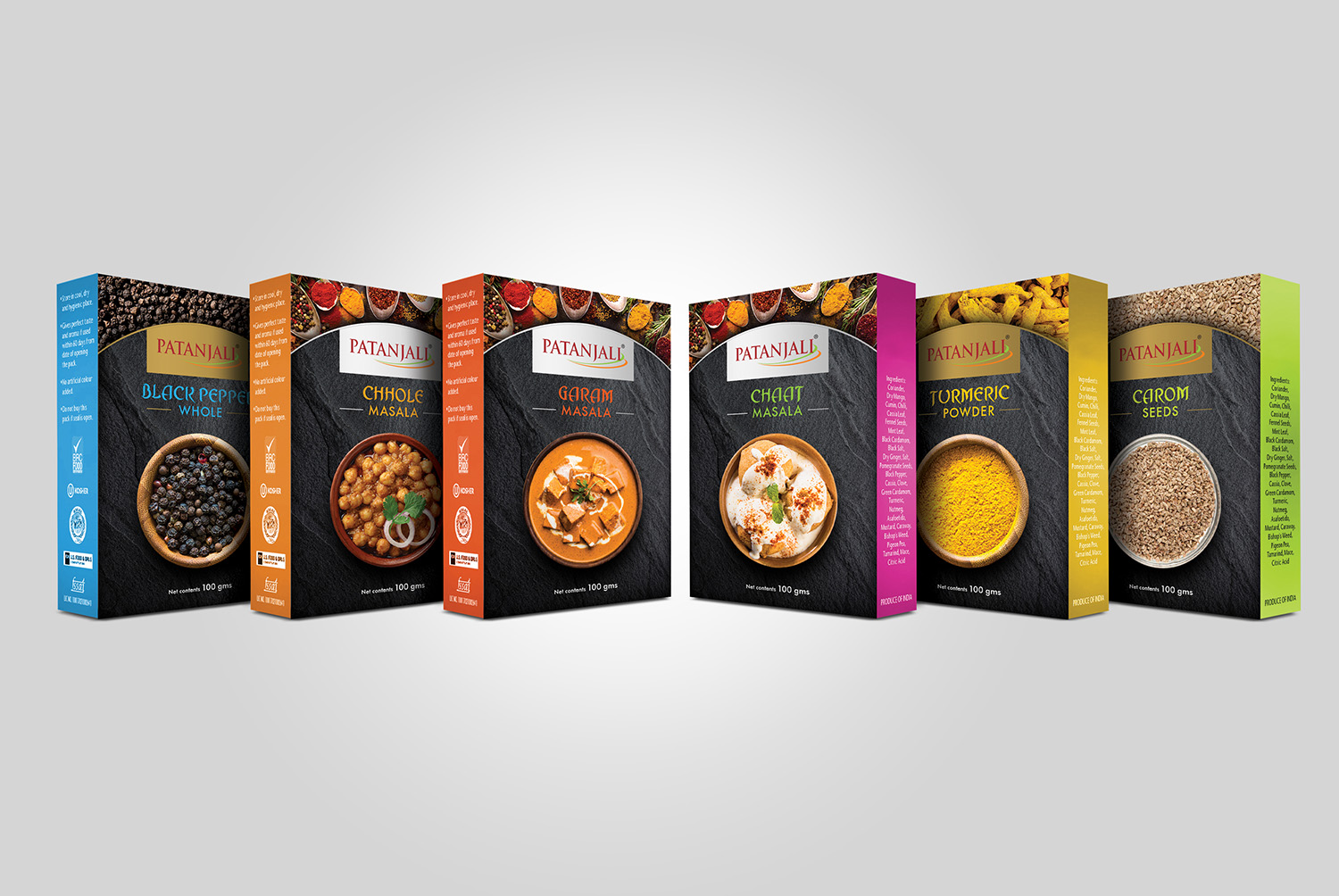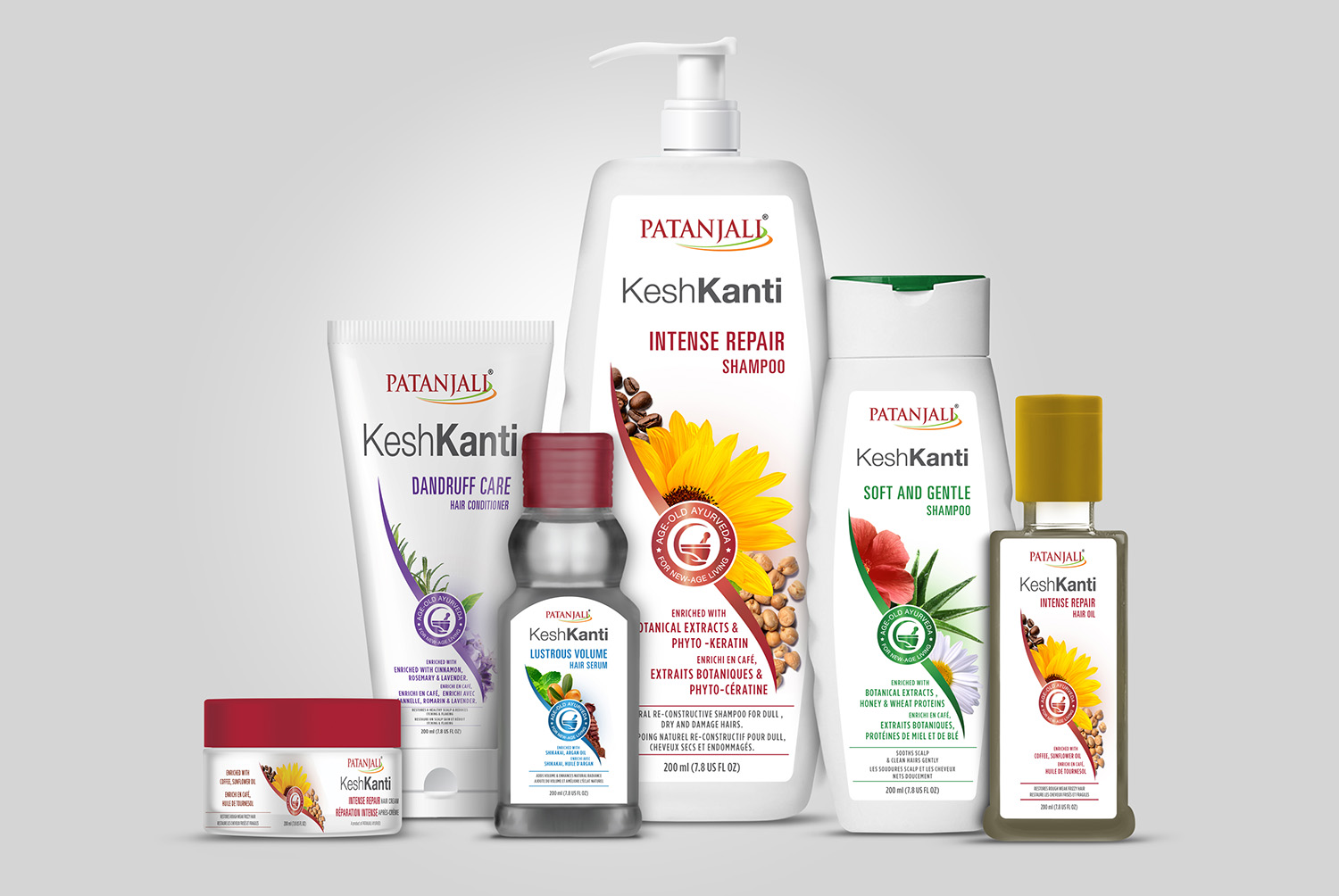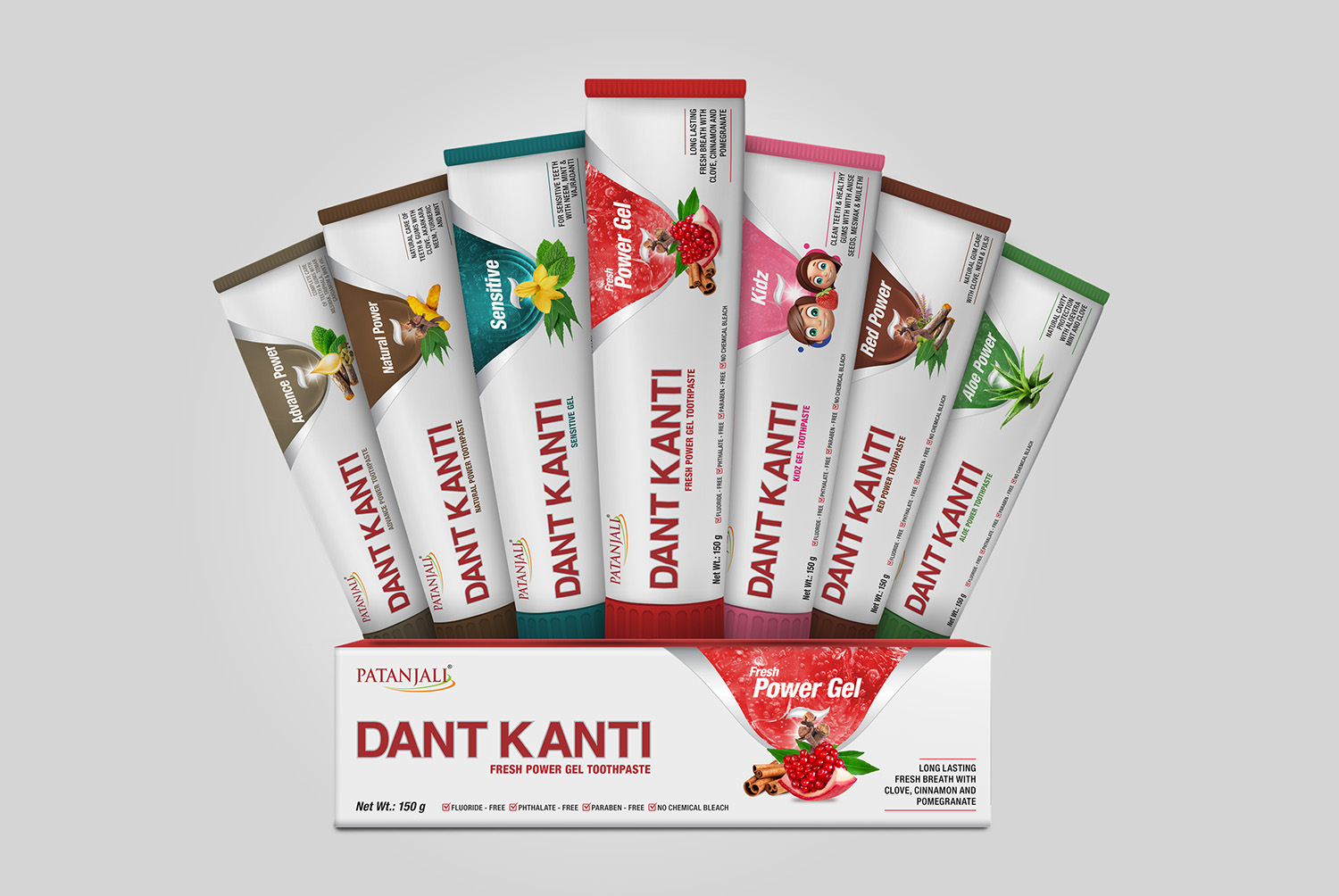BY DESIGN UNVEILS PATANJALI’S NEW AGE PACKAGING DESIGN
Let’s have a look at Patanjali’s Track Record
One of the fastest-growing (FMCG) brands in India in 2016 was Patanjali, as reported by CLSA and HSBC. It was valued at ₹3,000 crores in 2020.
For the 2016-17 financial year, Patanjali predicted a sales volume of 10,216 crores about US$1.3 billion.
India Infoline (IIFL) predicted that the success of Patanjali is going to have an impact on at least 13 publicly traded companies, including Hindustan Unilever, Colgate, Dabur, ITC, and Godrej Consumer Products.
Patanjali has found great success in the fast-moving consumer goods (FMCG) market thanks to the company's dedication to quality and authenticity, price strategy, advertising and promotion, and product
diversity.

The Production Process
The majority of the company's output comes from its primary factory in Patanjali Food and Herbal Park in Haridwar.
New production plants in Noida, Nagpur, and Indore increased the brand’s production capacity considerably.
The Central Industrial Security Force (CISF) deployed 35 armed commandos at the Patanjali Food and Herbal Park full-time in 2016.
Paramilitary CISF soldiers are stationed in the park, making it the eighth private institute in India to do so. Patanjali introduced a memorable jingle in 2017 to the tune of "Swadeshi Swabhiman, Rashtra Seva Ka Abhiyan" by Vaibhav Saxena which was well appreciated by the audiences.
Patanjali's Packaging Design Revamp
Customers have come to associate the brand with quality and dependability, and the products' health advantages and low prices have made them a hit. Patanjali is well-positioned to preserve its position as a top FMCG brand in India because of its dedication to innovation and customer experience.
A lesson to be learned from the success of the Patanjali packaging is that packaging design is more than simply good visuals. It is a powerful tool to communicate a company's values, product features or benefits, and brand stories to users. Incorporating new age design into your brand identity and packaging makes a tremendous impact on how perceive a brand and is thus a vital part of its identity.
There are a few reasons for upgrading and renovating the old Patanjali packaging to a new age design. Let’s dive into them.

CUSTOMER PURCHASE DECISION
Branding relies heavily on appealing packaging, which may make or break a customer's buying choice. When people visit a business or shop online, this is the very first thing they notice. In addition to its visual impact, packaging may serve as a vehicle for haring a company's core beliefs with consumers.
Patanjali wanted to upgrade its packaging using new age design principles, without drastically changing the brand's identity which customers have come to know and trust.
The reason for Patanjali's Success
IIFL Securities claims that Patanjali's success may be credited to the company's novel business strategy consisting of a single brand across a diverse range of product categories sold through an exclusive retail network and closely associated with Baba Ramdev.
The success of Patanjali's new age design is proof of the significance of the presentation.
• The revamped Patanjali packaging has made products more noticeable and appealing to customers and helped Patanjali gain new clients through this new age design.
• Patanjali's reputation as an innovative, eco-friendly, and honest company has also added to these benefits.
• Patanjali's products are chemical-free and created only from natural materials.
• The company's production methods are accessible to everyone, and the products have a solid reputation for dependability.
Patanjali’s Branding Method
Advertising and marketing are also significant priorities for Patanjali. The company has promoted its products featuring new age packaging designs using traditional media like television, print, and radio, alongside online methods like social media and influencer marketing.
Ad campaigns for this brand have been successful because they are unique and stand out in consumers' minds.
Patanjali has expanded its product line throughout the years to meet the varying demands of its customers. The new age design has helped cast a wider net when attracting audiences.
The variety of items available under the brand's umbrella is wide, from nutritional supplements and cosmetics to packaged foods and drinks.
The company has been able to survive and thrive despite shifting consumer preferences because of these diverse offers.

PATANJALI’S RISING POPULARITY
Customers and specialists in the field have given Patanjali’s new design their approval. Its cutting-edge style has earned it many awards and contributed to establishing Patanjali as a forward-thinking company.
The revamped look has also helped the company stand out in the competitive marketplace and win over new clients.
The brand’s current turnover at Rs 40,000 crore is expected to increase to Rs 1,00,000 crore in the next five years, as Patanjali steps up competition with established giants.
FAQS
1. What prompted Patanjali to revamp its packaging design?
A : The revamp was driven by the need to modernize the brand's image and enhance product visibility. This strategic move aimed to appeal to a broader, younger audience while maintaining the essence of Patanjali's traditional values and natural product offerings.
2. How does the new packaging reflect Patanjali's brand values?
A: The new design emphasizes quality, authenticity, and eco-friendliness, aligning with Patanjali's commitment to natural and traditional products. The packaging incorporates earthy tones and simple, clean graphics that convey a sense of purity and wholesomeness.
3. What elements were changed in the new packaging design?
A: Key changes include updated graphics, contemporary aesthetics, and clearer product information. These enhancements improve shelf appeal and make the products more accessible and attractive to consumers, aiding in quicker decision-making at the point of sale.
4. How has the market responded to the new packaging design?
A: The revamped packaging has been well-received, contributing positively to Patanjali's market presence and brand perception. Consumers appreciate the fresh look, which also reinforces the brand's trustworthiness and commitment to quality.
5. Did Patanjali face any challenges during the packaging redesign process?
A: The main challenge was balancing modern design elements with the brand's traditional identity and values. Ensuring the new packaging was eco-friendly while being visually appealing was also a significant consideration.